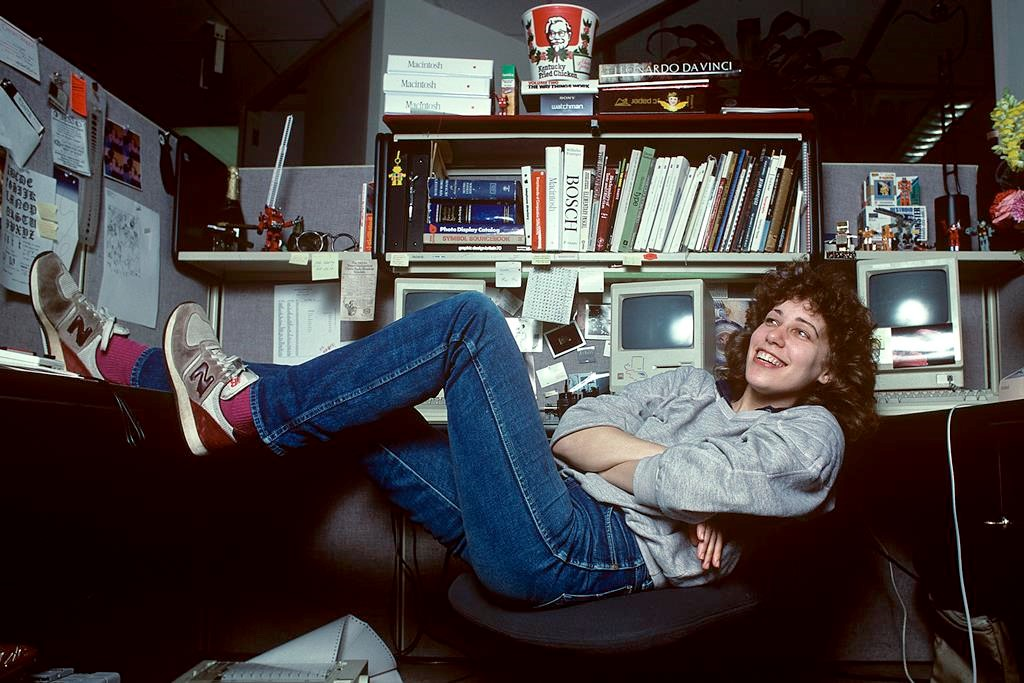Postmodernism in Europe

Susan Kare had immersed herself in the arts from a very young age. Whether that was drawing, painting, or various arts and crafts, she had a very early love to create. This passion would lead her to get a Bachelor’s Degree in Art as well as an M.A. and Ph.D. in fine Arts from Mount Holyoke College. She obtained the degree with the intent to be either a fine artist or teacher.

From there, Susan Kare would go on from there to work at the Fine Arts Museums of San Fransisco, opting for a job as a Sculptor. It was during her time spent working at the Museum when she would get a call from a high school friend Andy Hertzfeld to commission her for some hand-drawn icons and front elements for the release of the upcoming Macintosh computer. In exchange for her, work Kare was promised to receive an Apple II computer. Kare agreed but didn’t have any knowledge on how to start or complete a digital project such as this. Kare would draw upon her knowledge in Fine Arts of techniques used in Mosaics, needlepoint, and pointillism and began mocking up designs on graphic paper. These designs were the early stages of some of the most iconic and recognizable digital symbols we see daily.

In just one year she would design the core visual design language for the Macintosh. Icons, typefaces, and even marketing material for the product were designed by her. She would design iconic iconography for Apple like the trash can, paint bucket, dog-ear paper icon, I-beam cursor, and much more. She would truly begin to immerse herself in technology and the design world. She also designed the world’s first proportionally spaced digital font family; Chicago and Geneva. Kare would also design a monospaced type family Monaco. She became Creative Director in Apple Creative Services.

Susan Kare’s work recolonized the way we use and think about digital design to this day. Her innovations would set the bar for the future of digitals interfaces and iconography. Her work and story go to show that even if you set out a path for your career you can’t predict where life will take you in one’s art journey. I admire how she was able to use her Fine Art background and quickly adapt to digital design.

Citations:
“The Centre for Computing History.” Centre For Computing History, http://www.computinghistory.org.uk/det/1792/Susan-Kare/.
“Susan Kare.” Wikipedia, Wikimedia Foundation, 28 Mar. 2022, https://en.wikipedia.org/wiki/Susan_Kare.
“Susan Kare: Biography, Designs and Facts.” Famous Graphic Designers, https://www.famousgraphicdesigners.org/susan-kare.
Image Citations:
Cesarato, Alessandra. “Susan Kare: An Iconic Career: Blog.” Domestika, DOMESTIKA, 19 Dec. 2020, https://www.domestika.org/en/blog/3320-susan-kare-an-iconic-career.
Editorial, Canvs. “Susan Kare: An Iconic Graphic Designer.” Medium, Canvs Stories, 22 Jan. 2022, https://medium.com/canvs/susan-kare-an-iconic-graphic-designer-4627cae5c7cf.
Published Jan 12, 2016. “Susan Kare, Designer.” NYMag.com, https://nymag.com/news/features/beginnings/susan-kare/index.html.
“Susan Kare, Gui Icon Design Pioneer (and What the Mac’s Command Key Actually Represents).” Core77, https://www.core77.com/posts/21187/susan-kare-gui-icon-design-pioneer-and-what-the-macs-command-key-actually-represents-21187.
“Susan Kare.” Mount Holyoke College, 24 Aug. 2012, https://www.mtholyoke.edu/175/gallery/susan-kare.